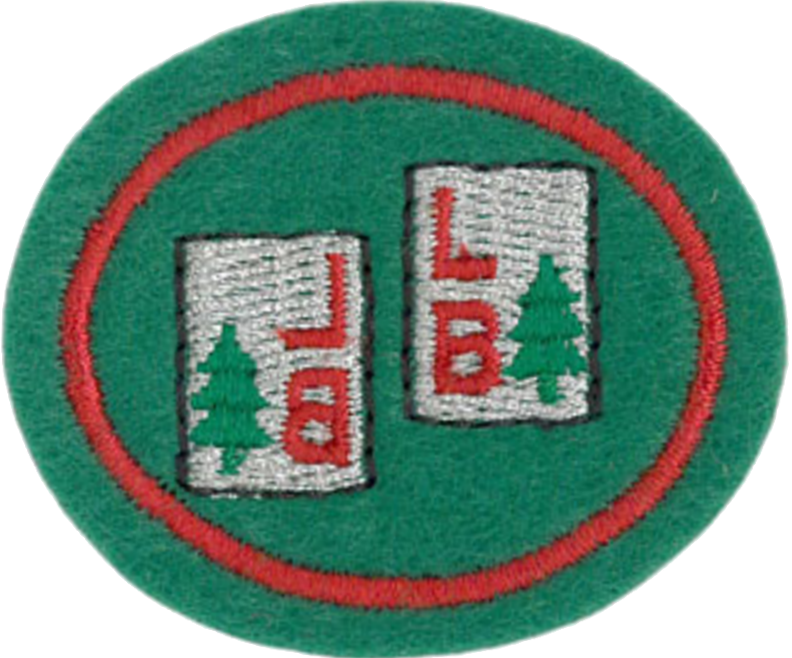Difference between revisions of "AY Honors/Letterboxing/Answer Key"
m |
m (- Category of AYHAB) |
||
| Line 179: | Line 179: | ||
* http://www.speedballart.com | * http://www.speedballart.com | ||
* craft stores | * craft stores | ||
| − | |||
<noinclude></translate></noinclude> | <noinclude></translate></noinclude> | ||
{{CloseHonorPage}} | {{CloseHonorPage}} | ||
Latest revision as of 15:53, 14 July 2022
1
1a
A hidden box
1b
Weatherproof boxes hidden in publicly-accessible places containing a log book and a rubber stamp. Letterboxers post clues to finding the box online on one of several Web sites. Letterboxing is similar to geocaching but much older, predating the internet and GPS. Letterboxing does not generally require a GPS.
1c
The alias used by letterboxers when stamping in or using the web sites.
1d
A small notebook or sketch book used to record letterbox stamps.
1e
To make an impression of your personal stamp in a letterbox’s log book and record an image of the box’s stamp in your own log book. You should also sign in with your Trail name, home town and date.
1f
A letterbox hidden inside another letterbox. Upon discovery the person moves it to another letterbox.
1g
A cache used by both letterboxers and geocachers.
1h
A letterbox whose clues are discovered inside another letterbox.
1i
Letterboxers swap images of their personal stamp upon meeting on the trail or at an event such as a camporee.
2
- Be kind to vegetation and personal property when hiding your box and looking for other boxes.
- While looking for a letterbox, leave the area just as or better than you found it. Pick up any litter you find.
- Be discreet while searching if other people are around.
- Move the box away from the hiding place so as not to reveal the cache.
- Clean your excess ink off a letterbox stamp.
- Make sure the box and/or plastic bags are securely closed when done stamping.
- Rehide the box as well as you found it.
- If the box is damaged or needs maintenance, such as a new log book, contact the owner.
3
3a
Paces are sometimes used as clues, but a pace is an inconsistent length. Develop the skill of knowing how many paces it takes you to go 100 feet or 100 meters (depending on which you are comfortable). To do this, measure out the fixed distance. Then walk is with your normal gait as you count the paces. Do this a couple of times to see how consistent you are.
3b
To use a compass, make sure you do not have any large metal objects on you (such as a pocket knife) and you are not standing near a large metal object (such as a car or a bridge). Hold the compass level in front of you at waist or chest height. Rotate your body around to make sure the needle spins freely (if it does not, check it for levelness again). The needle will point north.
3c
The four major directions are north, east, south, and west. The sun can tell you the direction if you remember that it rises in the east and sets in the west. In the northern hemisphere, it moves from east to south the west. In the southern hemisphere, it moves from east to north to west. At noon, the sun will be either in the south (northern hemisphere) or north (in the southern hemisphere).
The table below gives the approximate direction of the sun depending on the time and which hemisphere you are in.
| Time | Northern Hemisphere | Southern Hemisphere |
| 6:00 am | E (90°) | E (90°) |
| 9:00 am | SE (135°) | NE (45°) |
| 12:00 pm | S (180°) | N (0°) |
| 3:00 pm | SW (225°) | NW (315°) |
| 6:00 pm | W (270°) | W (270°) |
4
It would be a good idea to find two or three boxes before creating your own stamp. The http://letterboxing.org site has great information about “How to make a Rubber Stamp”. Most letterbox stamps don’t have the wood backing to save space, but many think the stamp looks better and is more durable when the wood backing is added.
There are many local craft stores to find the resources, such as Michaels, but two websites where you could order them have been listed in the References section below. If you encounter other universal sources, please add them to the list. Soft rubber or red erasers can be found many places.
5
The http://letterboxing.org is the website for finding caches in North America and a few other countries. Atlasquest.com is an international site and includes websites for England (where it started), Germany and other sites used worldwide. Geocaching.com lists letterboxes worldwide along side conventional geocaches.
Although over 30,000 boxes have been hidden, not all of them can still be found. Instructors should find 2 or 3 boxes before the group goes out in order to decrease initial discouragement. This requirement has been listed as a group activity, mainly for safety reasons, both on the internet and in the field. But make sure each Pathfinder participates and learns how to follow instructions and clues. If your group is large, divide into units no bigger than five. When clues have not been very clear ask the Pathfinders how they would improve the directions.
Some series include 8 to 10 boxes. Only four of these should be counted toward the 10 to require visiting more than one site for the honor.
Resources
- To find clues: http://www.letterboxing.org; http://www.atlasquest.com; http:/geocaching.com
- Information articles — http://www.letterboxing.org — “Letterboxing 101 Basic”,
- Start Finding Letterboxes, “How to Make a Rubber Stamp”
- http:/www.atlasquest.com — “Stamp Carving 101”
Materials
- http://www.Stampeaz.com
- http://www.speedballart.com
- craft stores


